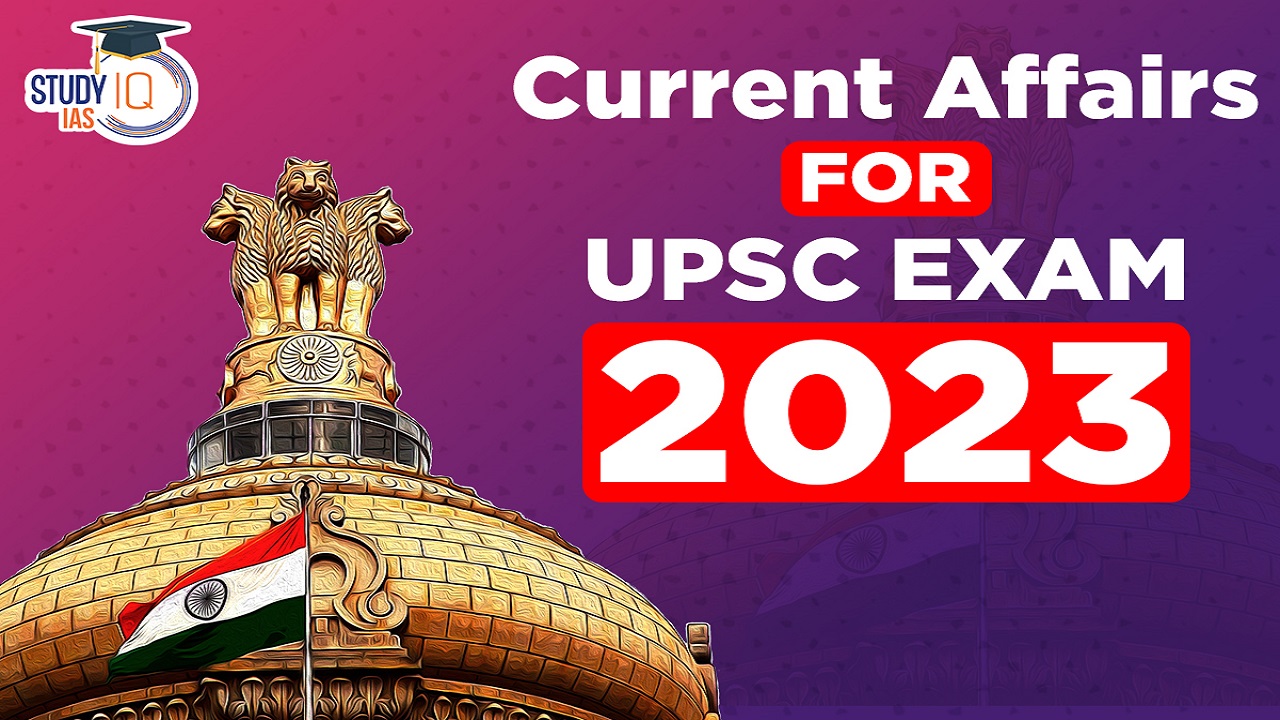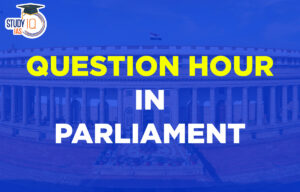Current Affairs 29th July 2023 for UPSC Prelims Exam
Conjunctivitis
Context: Mumbai has got 20% spike in Conjunctivitis cases; Delhi and other cities are also said to be affected.
About Conjunctivitis
- Definition: Often referred to casually as “pink eye”, conjunctivitis is the swelling or inflammation of the conjunctiva, the thin, transparent layer of tissue that lines the inner surface of the eyelid and covers the white part of the eye.
- Pink Eye: When small blood vessels in the conjunctiva become swollen and irritated, they’re more visible. This is what causes the whites of the eyes to appear reddish or pink.
- Cause: It can be caused by viruses, bacteria or by allergies.
- Both bacterial and viral conjunctivitis are highly contagious, while allergic conjunctivitis is not.

Eye Anatomy
- Eyes interpret size, shape, colour and distance of the objects and give a 3D picture of the objects visible.
- Liquids: The liquids maintaining the shape of the eyeballs are called aqueous humour and vitreous humour.
- Eyeball: It acts like a camera; the image of the objects received by the eyes are conducted to the brain. The visibility by one eye is known as monocular vision, and that by both eyes is binocular vision.
- Cornea: It is the clear, transparent, anterior portion of the external coat of the eyeball. The rays of light enter this layer. Cornea accounts for two-thirds of the total optical power of the eye.
- Pupil: It is an aperture of variable size in the centre of iris, which regulates the amount of light entering the eyeball.
- Iris: It is the coloured membrane behind the cornea and in point of lens with an aperture of variable size called pupil. It has a circular and long muscle fibre.
- Lens: It is a transparent, biconvex structure situated between the iris and vitreous humour. Its function is to focus the luminous rays; these rays form a perfect image on the retina.
- Retina: It is a transparent layer forming the inner coat of the eye, it supports the choroid layer. The rays of light, on entering the eyeball, converge and form an image on the fovea—the posterior part of the eye on retina.
- Transmission:
- It usually occurs through direct or indirect contact.
- Direct transmission happens through droplets from the cough or sneeze of an infected person or through hand-to-eye contact.
- Indirectly, it can spread via shared personal items like towels, makeup, pillows or contact lenses.
- Signs and Symptoms:
- Most common signs are redness, swelling and itching in the eyes.
- The eyes can also feel watery during the start of the flu.
- Treatment:
- For the treatment of conjunctivitis, one needs to use a combination of medicines.
- One of the most useful treatments is using artificial tears or even any lubricating eye drops; these can help the infected person to maintain moisture.
- A warm or cold compress will also help in giving relief from inflammation and swelling.
Current Affairs 28th July 2023 for UPSC Prelims Exam
Rabies
Context: As per information given by the Health Ministry in the Lok Sabha, Delhi recorded the highest number of deaths due to rabies in 2022.
About Rabies
- Definition: Rabies is a zoonotic, viral disease affecting the central nervous system.
- Cause: It is caused by a virus. Rabies virus is an RNA virus in the Rhabdoviridae family.
- Spread: Rabies is most often transmitted to humans through the bite of a rabid animals like dogs.
- The rabies virus infects the central nervous system of mammals, ultimately causing disease in the brain and death.
- Rabies is virtually 100% fatal. In up to 99% of cases, domestic dogs are responsible for rabies virus transmission to humans.
- Symptoms: The first symptoms of rabies may be similar to flu and may last for a few days, which includes:
- Fever, Headache, Nausea, Vomiting, Anxiety, Confusion, Hyperactivity, Difficulty swallowing, Excessive salivation, Hallucinations, Insomnia.
- Treatment: Rabies is a vaccine-preventable disease. Vaccinating dogs, including puppies, is the most cost-effective strategy for preventing rabies in people because it stops the transmission at its source.
- Rabies in India:
- Prevalence: Delhi has reported the highest number of deaths due to rabies in 2022 followed by West Bengal.
- Govt Initiatives: The Central Government has launched the National Rabies Control Programme (NRCP) for prevention and control of Rabies. It includes:
- provision of rabies vaccine & rabies immunoglobulin through national free drug initiatives
- training on appropriate animal bite management, prevention and control of rabies, surveillance and intersectoral coordination
- strengthening surveillance of animal bites and rabies deaths reporting
- creating awareness about rabies prevention.

International Olympic Committee
Context: International Olympic Committee’s President has formally invited 203 countries, except for Russia and Belarus, to participate in the Paris Olympics 2024.
About International Olympic Committee (IOC)
- Definition: The International Olympic Committee (IOC) is a not-for-profit independent international organisation that is committed to building a better world through sport.
- The IOC is the supreme authority of the Olympic Movement.
- Establishment: It was created on 23 June 1894, just under two years before the first Olympic Games of the modern era in April 1896.
- Aim:
- It acts as a catalyst for collaboration between all Olympic stakeholders, including the athletes, the National Olympic Committees, the International Federations, Organising Committees for the Olympic Games, the Worldwide Olympic Partners and Olympic broadcast partners.
- It also collaborates with public and private authorities including the United Nations and other international organisations.
- Governance:
- The President represents the IOC and presides over all its activities.
- He is elected by the Session.
- Length of the President’s term of office is now fixed at eight years (entered into force 12 December 1999), renewable once for four years.
- Currently, Thomas Bach is serving as the ninth President of the IOC.
- Headquarters: Lausanne, Switzerland.
Look Out Circular (LOC)
Context: The Supreme Court has ordered withdrawal of the Look Out Circular (LOC) issued against a renowned MP in connection with the money laundering cases.
- Definition: An LOC is issued to make sure that an individual who is absconding or wanted by law enforcement agencies is not able to leave the country.
- Issuance: It is mostly used at immigration checkpoints at international airports and seaports by the immigration branch.
- In certain cases, the police can approach a court asking for the restriction of a person’s movement outside the country, when that person is a suspect and there is an apprehension that they may not join the investigation at a later stage.
- Remedial Measure:
-
- The subject of an LOC can challenge the circular and get relief from a court.
-
- Issuing Authority:
- An LOC can be initiated by a large number of authorised officers, including an officer not below the rank of:
- Deputy secretary,
- Joint secretary,
- District magistrate or superintendent of police,
- Designated officers of various law enforcing and security agencies,
- Designated officer of Interpol,
- Additional director in the Serious Fraud Investigation Office, and the Ministry of Corporate Affairs.
- Heads of public sector banks can also directly request the authorities to issue an LOC against wilful defaulters to prevent them from leaving the country. So now, an officer not below the rank of chairman/managing director/chief executive of any public sector bank can make a request.
- An LOC can be initiated by a large number of authorised officers, including an officer not below the rank of:
- Withdrawal: An LOC can be modified/deleted/withdrawn by the Bureau of Immigration only on the specific request of the authorised originator on whose request the LOC was issued.
- Arrest: An LOC may not necessarily lead to arrest.
- LOCs can be of several types:
- To merely stop a person against whom the circular has been issued from travelling outside the country,
- To prevent a person from entering the country,
- To inform the concerned investigation agencies.
- The proforma of the LOC also contains a request to detain the individual at the local police/investigation agency, which generally leads to arrest.
- LOCs can be of several types:


 Question Hour in Parliament: Meaning, Ty...
Question Hour in Parliament: Meaning, Ty...
 Daily Quiz 18 July 2025
Daily Quiz 18 July 2025





















